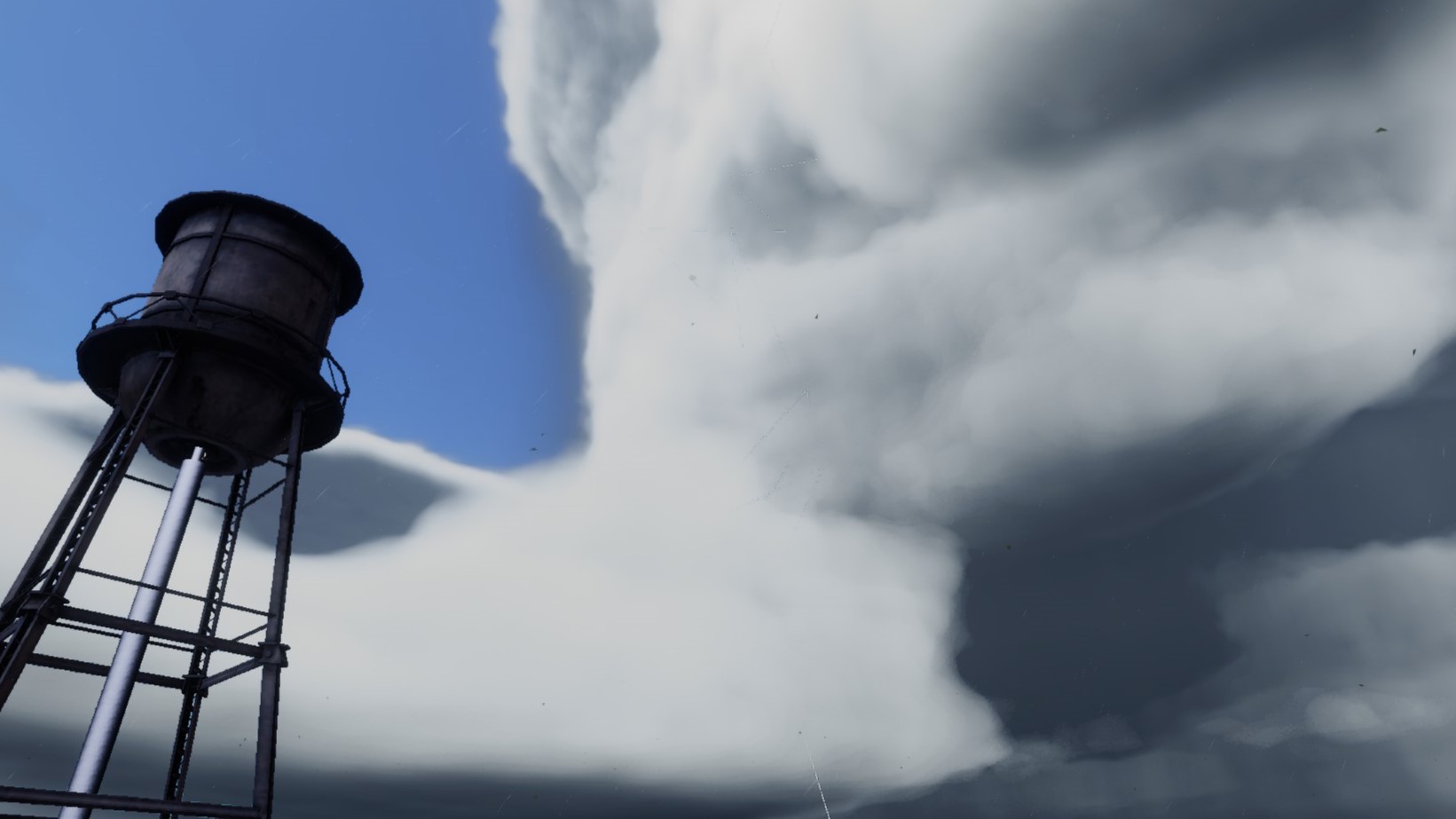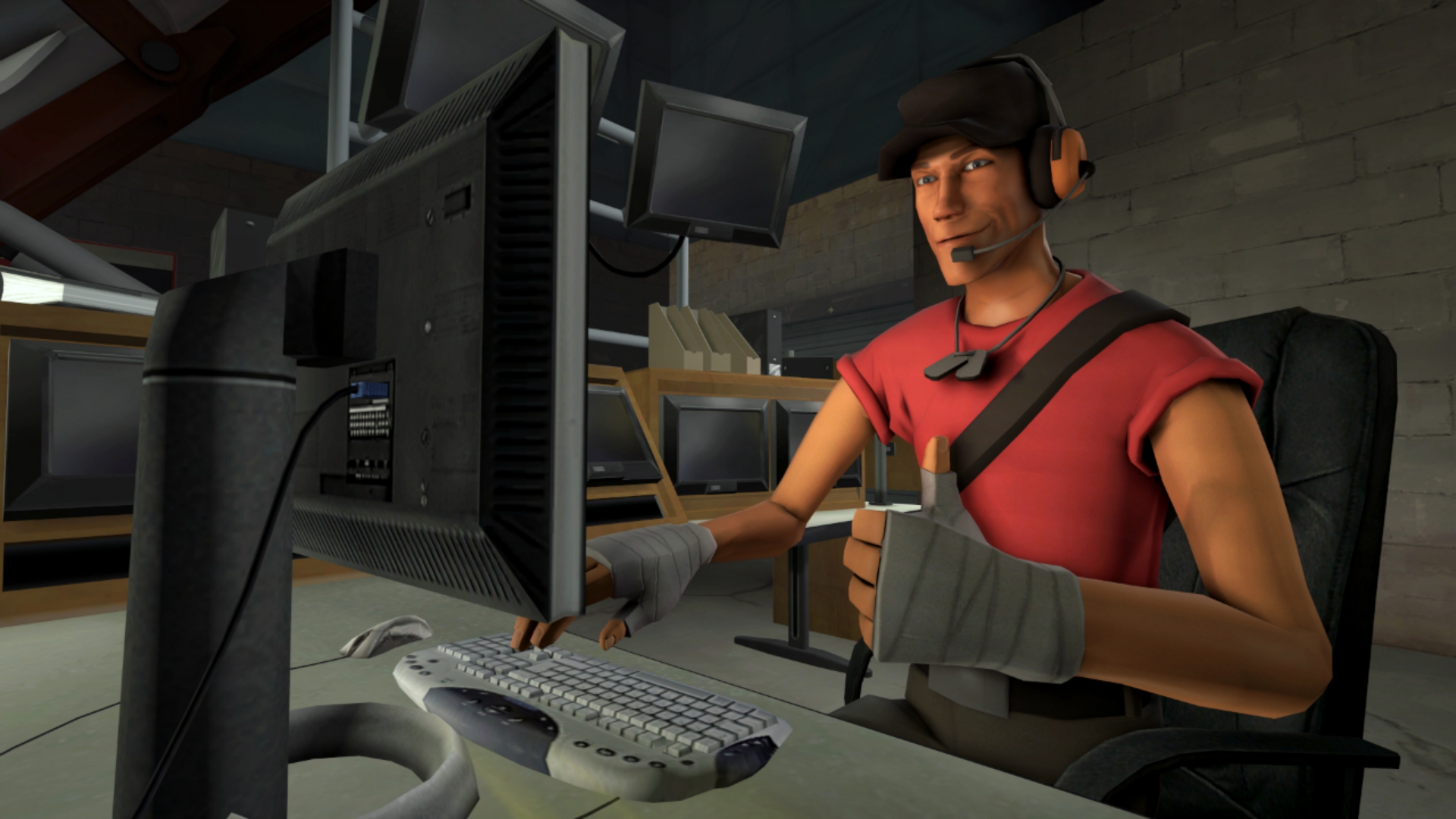
Outbrk needs work, but when the wind's just right it feels like a proper multiplayer take on Twister.
I don’t know a lot about meteorology. My local weather radar is a mostly frightening doohickey that I regard the way I assume Homo erectus might regard a quantum computer. Maybe that’s why after Outbrk’s tutorial told me how to identify the tell-tale, swirling “hook echo” pattern that marks a potential tornado, I was more psyched than worried to be met with a deadly calamity only meters away.
I assume this is how hardcore weather freaks feel all the time. Outbrk is a game about storm chasing: a hobbyist phenomenon where people willingly fly toward disastrous conditions in pursuit of a good photo and crucial weather data. If you’ve seen Twister, it’s like that. I mean, it is that. Probably.
The setup is simple enough—you’ve got a car, a probe to measure wind speeds, a smartphone app to report special conditions and tornadoes to other players, and a camera to immortalize those tornadoes at their most photogenic. You’ve got 25 shots at getting a few pictures good enough to be worth some cash, with close proximity and a clear view of the tornado setting you up for the biggest end-of-session payout. All that money goes toward new hairstyles and cosmetic upgrades for your car, so distinguished storm chasers will only want to settle for optimal-grade pictures. In the online mode, you’ll be working together with others to find hotspots and racing around to report tornadoes, wall clouds and funnel clouds first.
There are long stretches of downtime where you’re just exploring the game’s fictionalized take on American tornado country, but naturally, Outbrk is at its best when a promising storm rolls in. Once you’ve got a target in mind, you’re always easing toward danger or rocketing away from it; whether that’s a hail storm trying to crack open your windshield or lightning striking way too close for comfort. It culminates in thrilling key moments where you risk your life—and more importantly, your earnings—all to get just a little closer to your subject.
(Image credit: Sublime)
In one of these moments, I was tailgating some other players who seemed to know a little more than I did. We all parked our cars to get a good look at some sheer winds showing signs of rotation. I slapped down my weather probe and scoped the surrounding storm with my camera, looking for anything interesting. Lots of rain and wind, but no tornado—until, suddenly, there it was within striking distance of us.
Several dozen minutes of slow-burning tension turned electric and giddy as I rushed to get a good photo, report it to everyone on the server, and then flee for dear life in my car, which was reeling and shaking with the rotating winds. After escaping to a safe distance and waiting it out, I climbed over smashed trees in a severe thunderstorm to retrieve my weather probe, which had gathered enough data to double my payday for that chase.
It all bore a sort of tactile presence weather rarely does in games—which is good, since it’s usually set dressing rather than the main event. Clouds and rotating winds seem to physically gather in the distance rather than hide in a skybox texture, and the same applies to lightning, which is so real it might just fry you. It’s all crafted using historic weather data, as well, which helps the pace of everything feel organic and lends a sense of realism. This is aided by the need to watch your fuel gauge and occasionally stock up at a gas station, lest you end up stranded in the middle of a field looking like a lightning rod.
It’s a marvel at the best of times, but the stars have to align a bit for the game to really pop. A slow traipse through an uneventful storm with a wall cloud here and there (I know weather words now!) is underwhelming, but it’s going to happen; the downside of using real data is that not every thunderstorm was designed to excite you. That said, interaction with other players went a long way in alerting everyone to the most exciting stuff, and purposeful use of the map’s various radar tools and datasets kept me from wasting too much time.
(Image credit: Sublime)
(Image credit: Sublime)
(Image credit: Sublime)
(Image credit: Sublime)
(Image credit: Sublime)
(Image credit: Sublime)
(Image credit: Sublime)
Unfortunately a pretty thick layer of jank occasionally walled me off from those peak moments. Performance issues and matchmaking trouble are to be expected on launch day for an early access game, but the lack of polish runs deep in Outbrk. Character animations and vehicle controls were stiff, my car had a bad habit of getting stuck in terrain, and my framerate tanked whenever I looked out the window at too big a cloud (even with the settings dialed down, even though I exceed the recommended system requirements). Though cranking the graphics settings up with a tornado near was a pretty incredible sight, I can’t play the game like that in its current state, and the medium preset was as high as I could go and still get a decent frame rate.
Those matchmaking woes—long queues, struggles to find players, games failing to start, etc.—are particularly unfortunate, because while the game does have an offline mode, it doesn’t compare to the emergent social experience of coordinating with other storm chasers, trying to get ahead of the pack and report big disasters first. Outbrk seems to agree, as you get no in-game currency for playing offline.
(Image credit: Sublime)
To developer Sublime’s credit, it’s on top of hotfixing things as I write this, and matchmaking quality improved even over the launch weekend as I played. These issues, though rough, are standard early access fare. Still, it might take a little more time for Outbrk to become the storm chasing sim of your dreams, and there’s plenty on the way as laid out on the game’s Kickstarter page, from new cosmetics and vehicles to fully simulated recreations of historic disasters like El Reno and the 2011 Tuscaloosa–Birmingham tornado. While there are other games catering to this niche, like Tornado: Search and Rescue and Storm Chasers, they don’t (to my eye) aspire to the same degree of simulated fidelity as Outbrk.
I don’t know if Outbrk made me an aspirant storm chaser—I like waiting out extreme weather in the lap of luxury, in the closet and on the floor—but I can see it really resonating with someone passionate enough about the subject matter to overlook its rough edges. Assuming those can get brushed up, there’s something one-of-a-kind in the works here.





